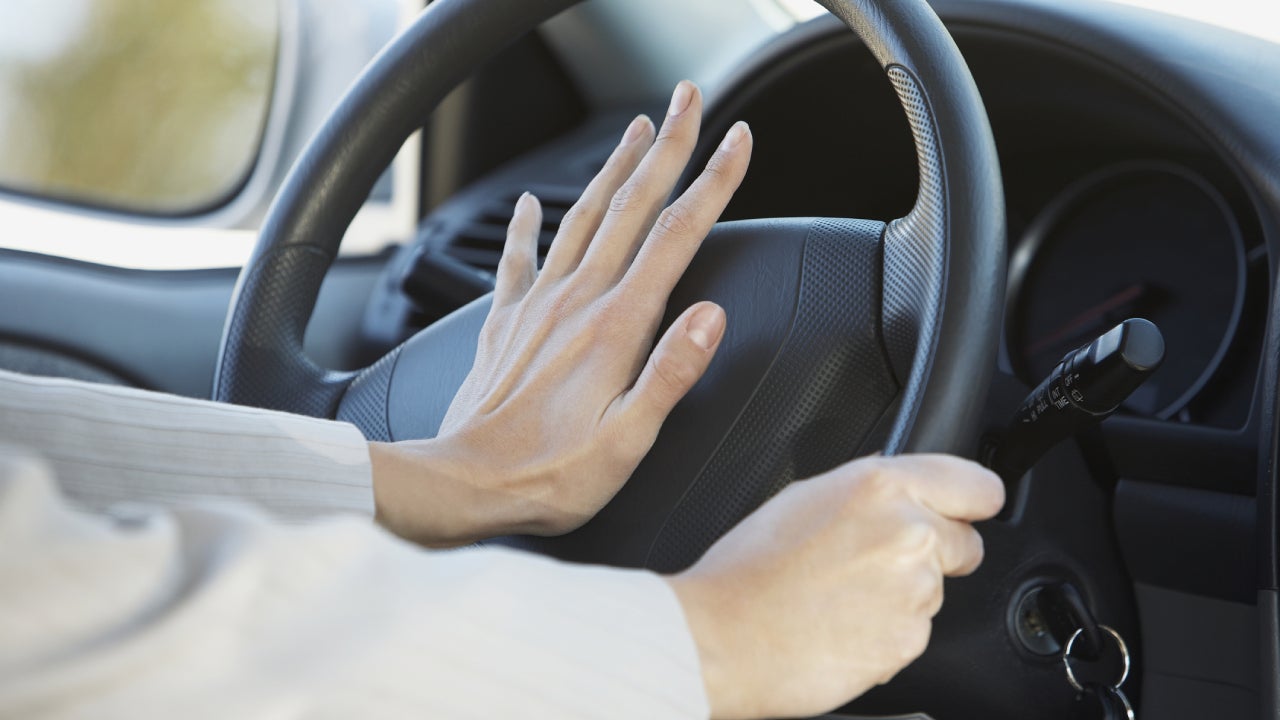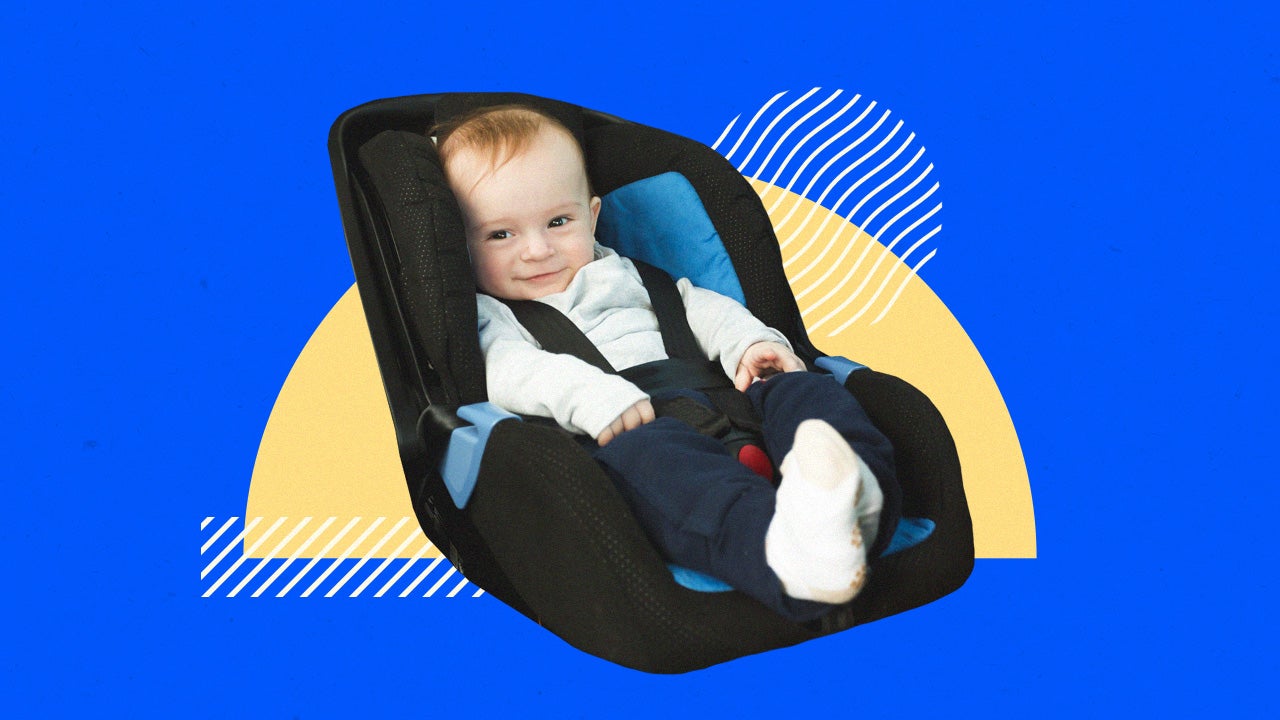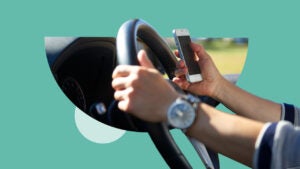Drowsy driving statistics and facts 2024

Speeding, drinking and driving, and distracted driving are well-known contributors to car crashes and traffic-related fatalities, but until recently, drowsy driving has flown under the radar. According to data from AAA’s Foundation for Traffic Safety report, drowsy driving caused 29,834 traffic fatalities between 2017-2021, with 6,726 occurring in 2021 alone. Drowsy and tired driving is dangerous because many people are unaware of how tired they are until they are behind the wheel of a car, potentially putting themselves and others at risk. Bankrate’s editorial team breaks down the latest drowsy driving statistics and offers some tips on being a safer and more alert driver.
Drowsy driving statistics
- Statistics show an estimated 17.6 percent of fatal car crashes between 2017 and 2021 involved a drowsy driver (AAA Foundation)
- The majority of drowsy-driving crashes happen between midnight and 6 a.m. or in the late afternoon hours. (NHTSA)
- 1 in 25 drivers admit to falling asleep behind the wheel. (CDC)
- Driving drowsy and driving drunk have similar effects. Driving after more than 20 hours without sleep is estimated to be the equivalent of driving with a BAC of 0.08 percent. (NSC)
- Data shows that you are three times more likely to be in a car accident if you are fatigued. (NSC)
- Fatigue-related crashes resulting in injuries or fatalities cost more than $109 billion annually, which does not include the cost of property damage. (AAA)
- An estimated 96 percent of drivers say that drowsy driving is very or extremely dangerous. However, less than 30 percent of drivers think drowsy drivers are at risk of getting pulled over by law enforcement. (AAA)
- About 24 percent of drivers have admitted to driving while being so fatigued that they struggled to keep their eyes open at least once in the past 30 days. (AAA Foundation)
- In 2022, more than 1,261 drivers who were involved in fatal crashes reported being drowsy, which accounted for about 2.1 percent of all fatal accidents. (Triple-I)
What is drowsy driving?
Drowsy driving, also known as driver fatigue or tired driving, is the act of driving or operating a motor vehicle while tired and feeling fatigued or sleepy. Job stress or interrupted nights with young children are common reasons for being short on sleep.
However, other factors can contribute to drowsy driving, such as a medication you are taking or an untreated sleep disorder that leaves you depleted and unable to stay awake during the day. Late-night and third-shift workers are particularly affected by the natural release of melatonin associated with dark hours as they journey home after a long shift.
Drowsy driving accidents can be caused by a number of factors. Here are some of the main effects of drowsy driving that can lead to serious crashes:
- Inability to focus: When you drive tired, you often lose the ability to focus. If you are working hard to stay awake behind the wheel, you are not giving your full attention to the road ahead and other drivers and obstacles around you.
- Delayed reaction times: Much like driving under the influence of drugs or alcohol, you usually experience delayed reaction times when driving drowsy. If you are not fully alert, it could impact your ability to react quickly and avoid an accident.
- Poor judgment: Poor judgment is often a consequence of driving drowsy. Your brain slows down due to fatigue and lack of sleep, which can make it harder to make safe judgments while driving.
- Inability to judge distances and speeds: Due to slowed reaction times and poor judgment, fatigued drivers can easily misjudge distances and speed. For example, if you are feeling drowsy, you could unknowingly be driving too fast or too slow, which could lead to an accident.
- Falling asleep: Of course, the biggest risk of driving drowsy is actually falling asleep at the wheel. You could cause an accident with another driver, drive off the road or hit a stationary object.
The effects of drowsy driving are more severe than most people realize. When you are awake for more than 18 hours, the effect on your body is the same as if you had a BAC of 0.05 percent. According to the CDC, after being awake for 24 hours, it’s similar to having a BAC of 0.10 percent, which far exceeds the legal limit in all states. Considering the legal blood alcohol content (BAC) limit is 0.08 percent, drowsy driving is similar to drunk driving.
In addition, certain groups are more susceptible to drowsy driving. This includes drivers in their teens and early 20s. Data shows that gender does not have a significant impact on drowsy-driving crashes, but across the board, females are more likely to be involved in drowsy-driving accidents, according to a study from the AAA Foundation.
Drowsy driving crashes and fatalities
Driving drowsy has been shown to increase the risk of accidents and potentially fatal crashes. According to the Insurance Information Institute (Triple-I), drowsy, asleep, fatigued, ill or blacked out drivers accounted for 2.1 percent of fatal car crashes in 2022.
NHTSA and NSF have stated that the reported number of drowsy drivers is artificially low due to under-reporting because sleepiness before and after a crash can be challenging to ascertain. To put drowsy driving fatalities in context, see the chart below summarizing data from a 2022 NHTSA report:
| Factor | Number of Fatal Crashes | Percentage of Fatal Crashes |
|---|---|---|
| Driving too fast | 11,103 | 18.5% |
| Under the influence of alcohol, drugs, or medication | 6,594 | 11.0% |
| Failure to keep in proper lane | 3,420 | 5.7% |
| Failure to yield right of way | 4,432 | 7.4% |
| Distracted (phone, talking, eating, object, etc.) | 3,124 | 5.2% |
| Operating vehicle in a careless manner | 2,251 | 4.2% |
| Overcorrecting/oversteering | 1,708 | 2.8% |
| Failure to obey traffic signs, signals, or officer | 2,541 | 4.2% |
| Erratic, reckless, careless, or negligent driving | 2,251 | 3.7% |
| Swerving or avoiding due to weather, object, motorist, etc. | 1334 | 2.2% |
| Vision obscured | 1,542 | 2.6% |
| Driving the wrong way | 1,282 | 2.1% |
| Drowsy | 1,264 | 2.1% |
| Improper turn | 485 | 0.8% |
Does drowsy driving increase car insurance rates?
In addition, driving drowsy can have an impact on your car insurance. If you get into an accident due to fatigue, your car insurance rate could increase significantly. And, if the crash results in serious injuries or fatalities, you could potentially lose your driving privileges temporarily. Below, you can see the average annual cost of car insurance after an at-fault accident. Note that your rate following an accident will depend on the state you live in, the severity of the accident and other personal rating factors.
| Average cost of full coverage car insurance | Average cost of full coverage car insurance after an at-fault accident | Dollar increase after an at-fault accident | Percentage increase after an at-fault accident |
|---|---|---|---|
| $2,458 | $3,508 | +$1,050 | +43% |
Historical drowsy driving statistics
According to the NHTSA, drowsy driving-related fatalities increased by 8.2 percent from 2020 to 2021 after they dropped 11.2 percent in 2019 from 2018. AAA states that while the statistics have fluctuated, overall drowsy driving rates have remained consistent. The increase in fatalities correlates with the overall rise in car crash fatalities in general.
| Year | Drivers involved in fatal crashes who were drowsy | Percentage of all drivers involved in fatal crashes | Fatalities involving drowsy driving |
|---|---|---|---|
| 2022 | 1,264 | 1.33% | 693 |
| 2021 | 1,210 | 1.38% | 701 |
| 2020 | 1,165 | 2.2% | 632 |
| 2019 | 1,240 | 1.2% | 697 |
| 2018 | 1,221 | 2.4% | 785 |
| 2017 | 1,319 | 2.5% | 697 |
| 2016 | 1,332 | 2.5% | 803 |
| 2015 | 1,275 | 2.6% | 824 |
| 2014 | 1,306 | 2.9% | 851 |
| 2013 | 1,234 | 2.8% | 801 |
| 2012 | 1,221 | 2.4% | 835 |
| 2011 | 1,173 | 2.7% | 810 |
| Source: NHTSA and Triple-I |
Importance of good sleep hygiene
Poor sleep is a common problem, with one in three U.S. adults suffering from insufficient levels of sleep and rest each day. Practicing good sleep hygiene is incredibly important, and it can help prevent you from driving drowsy. Sleep-related disorders and poor sleep quality affect Americans of all ages, genders and socioeconomic classes. However, there are certain risk factors that can work against tired drivers, increasing the chances of an accident related to drowsy driving. Some of those risk factors include:
Drowsy driving by age
Overall, drowsy driving is something that all age groups experience. However, young people tend to be more likely to drive after a severe lack of sleep. When asked if they’ve nodded off in the last week, all age groups responded the same, except ages 21 – 29, who were twice as likely as other age groups to have nodded off behind the wheel in the last week.
Drowsy driving by gender
When it comes to gender, drowsy driving studies show mixed results. Some reports show that fatigued driving behavior tends to skew slightly more male, whereas other studies indicate that females have a slightly higher risk of getting into a drowsy-driving-related accident.
Drowsy driving by time of day
Unsurprisingly, drowsy driving is more likely at night. Almost half of all drowsy driving episodes happen between 9 p.m. and 6 a.m. With that said, 26 percent of respondents said they had nodded off while driving between noon and 5 p.m. When it comes to safe driving, it is important not to ignore the dangers of drowsy driving, even during the daytime.
Drowsy driving by length of drive
When it comes to the length of drive that causes drivers to nod off, you may think that the longer the drive, the more likely the drowsy driving behavior. Interestingly enough, 30 percent of drivers report nodding off on a drive shorter than one hour.
Warning signs of fatigue
Specific drowsiness indicators signal that you should refrain from driving until you have had more sleep. However, driver fatigue may not always show itself in the same form, making it harder for some to detect. Some of the key warning signs of drowsy driving include:
Body:
- Unfocused vision: Some of the biggest warning signs of exhaustion are blurry vision, itching eyes, struggling to keep your eyes open and excessive blinking.
- Heavy head: If you’re tired, your head may feel heavy, and it might feel difficult to hold your head in a neutral position while driving.
- Yawning: Yawning is an obvious warning sign of being tired. If you’re yawning repeatedly, it’s a sign that you should pull over before you fall asleep.
Mind:
- Can’t remember recent miles driven: If you can’t remember the last few minutes of your drive, you might be too tired to be behind the wheel.
- Feeling irritable or aggressive: While it might sound counterintuitive, feeling aggressive, impatient and restless can actually be a sign of fatigue.
- Poor focus: Being tired makes it difficult to focus. This can be dangerous when you’re behind the wheel and need to pay attention.
Driving behavior:
- Drifting in and out of lanes: Drifting in and out of your lane is dangerous, and it’s a good indication that you’re too tired to be driving.
- Tailgating: If you find yourself tailgating the car in front of you, you might be struggling to appropriately judge the distance due to your fatigue.
- Missing exits: You might miss exits or road signs when you’re extremely tired, even exits and signs you know by heart.
Who is most at risk for drowsy driving?
Drowsy driving affects everyone, regardless of age, career, economic status and driving experience. It’s not uncommon for drivers to experience fatigue, and sometimes, you’re forced to get behind the wheel when you’re sleep-deprived. However, some groups are more at risk for drowsy driving than others:
- Teen drivers: Teens and young drivers have had less time on the road, so their skills are not fully developed behind the wheel. Younger drivers are also more likely to drive during late hours for work or social reasons, making them more susceptible to drowsy driving.
- Shift workers and night workers: Those who work night, rotating or double shifts have six times the risk of drowsy driving than other workers. Professionals who often work grueling shifts can include doctors, nurses, pilots, police officers and firefighters.
- Commercial drivers: Those who drive for a living put more miles on the road than the average commuter. Commercial drivers are also at much higher risk of drowsy driving, given the long hours and unforgiving deadlines that many commercial drivers face.
- Business travelers: Those who travel the country regularly for business are at particular risk of drowsy driving, as they are often subjected to jet lag, changing time zones as often as ZIP codes. If you travel extensively for work, it can be challenging to get enough sleep to be safe on the road.
- People with sleep disorders: Drowsy driving can be an everyday battle for drivers with sleep disorders. Narcolepsy or insomnia can leave some drivers feeling depleted and tired during the day, while those with untreated obstructive sleep apnea (OSA) are categorically more at risk for drowsy driving.
How to prevent drowsy driving
We have all felt tired behind the wheel and the best thing to do is to pull over and assess the situation. Can you find a safe place to nap? Or maybe calling a friend or a ridesharing service to pick you up is a better option. Below are some tips to help you stay alert and remain safe on the road.
- Practice healthy sleep habits: The best defense against drowsy driving is enough sleep. The recommended amount for adults is a minimum of seven hours of sleep, while at least eight are recommended for teens. Even just 10 minutes can provide immediate improvement in your ability to remain alert.
- Ask for help: Whether you have trouble sleeping or concerns about the medications you are taking making you drowsy, consider seeing a medical professional for possible solutions.
- Organize a carpool: The most common time for drowsy driving is driving to and from work. Carpooling to and from work will not only help you stay awake, but may also help you qualify for a car insurance discount for carpooling or lower annual mileage.
- Add some stimuli: Keep your mind alert by opening a window, singing along to the radio or even listening to an audiobook. If needed, you may want to stop for a coffee or soda for a caffeine boost.
- Plan driving times: If you can afford to be picky about when you drive, try to plan your trip during the time of day when you are most alert and energized.
- Skip the alcohol: Even a tiny amount of alcohol can make you feel drowsy while driving, so instead, skip the booze and opt for water.
Methodology
Bankrate utilizes Quadrant Information Services to analyze November 2024 rates for all ZIP codes and carriers in all 50 states and Washington, D.C. Rates are weighted based on the population density in each geographic region. Quoted rates are based on a single, 40-year-old male and female driver with a clean driving record, good credit and the following full coverage limits:
- $100,000 bodily injury liability per person
- $300,000 bodily injury liability per accident
- $50,000 property damage liability per accident
- $100,000 uninsured motorist bodily injury per person
- $300,000 uninsured motorist bodily injury per accident
- $500 collision deductible
- $500 comprehensive deductible
To determine minimum coverage limits, Bankrate used minimum coverage that meets each state’s requirements. Our base profile drivers own a 2022 Toyota Camry, commute five days a week and drive 12,000 miles annually.
These are sample rates and should only be used for comparative purposes.
Incidents: Rates were calculated by evaluating our base profile with the following incidents applied: clean record (base) and at-fault accident.
You may also like

Road rage statistics and facts in 2024


Car and booster seat facts and statistics

Texting and driving statistics 2024


